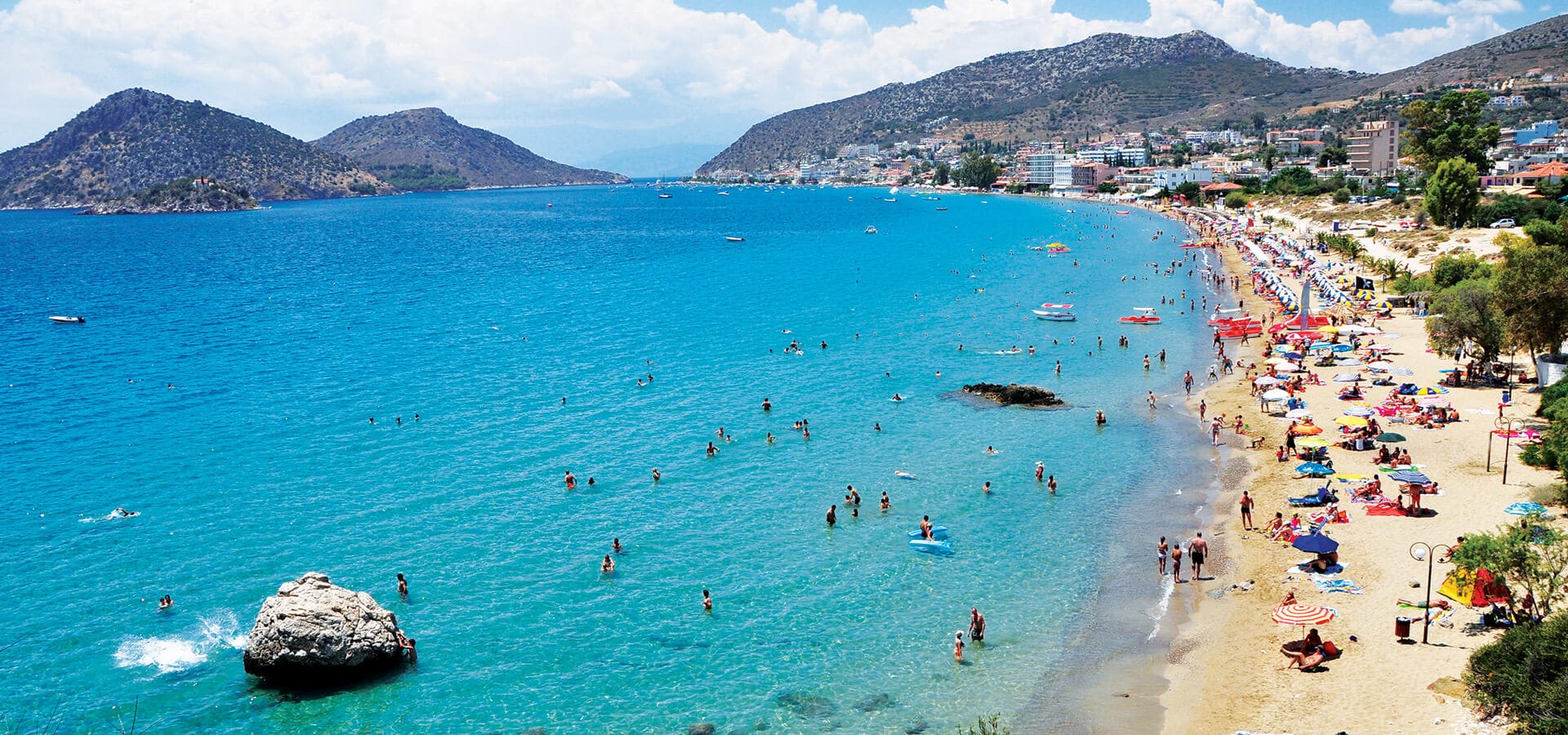A Local's Guide to Argolida

by Natalie Alexakis
Situated in the eastern part of the Peloponnese peninsula of Greece, is the tripoint area of Argolida, famous for its orange orchards and olive groves.
It separates the Saronic and Argolic Gulfs and is steeped in legend and history.
Within a two-hour drive from Athens, the Argolida peninsula offers visitors looking for a memorable holiday in Greece many historical sites, culture, and natural attractions.
How to explore Argolida?
Nafplio
Nafplio, the former capital of Greece, remains one of the most beautiful towns in the country. Greek mythology attributes its foundation to Nafplios, son of Poseidon. The town has Byzantine, Frankish, Venetian, and Turkish influences, making it one of Europe's most romantic spots.
Top things to see
- Palamidi Fortress: The 999 step ascent to a former prison is worth the trek. Boasting an amazing panoramic view of the blue Aegean, the fortress is symbolic of Greek independence and freedom. Built by the Venetians during their second occupation, the Greeks seized Palamidi port and regained control over the fortress.
- The Old Town: Nafplio’s old town takes you back in time. From neoclassical mansions to picturesque cobblestone alleyways, the old town exudes charm.
- Syntagma Square: In the heart of Nafplio, Syntagma square is riddled with traditional Greek tavernas and coffee shops, alongside historical buildings and landmarks. Here you will also find the exquisite Archaeological Museum which is loaded with artefacts varying from the Neolithic period right up to the Roman period.
Located in the vicinity of Nafplio is also the ancient site of Mycenae. The site remains one of Greece's most popular archaeological destinations.


Epidaurus
One of the most famous archaeological sites in Greece is located east of Nafplio. In ancient times, Epidaurus was believed to be the sanctuary of Asclepius, the god of healing, with many pilgrims coming here for healing. Today, the area is divided into two parts: Palaia (old) Epidaurus and Nea (new) Epidaurus.
Epidaurus is most famous for its well preserved ancient theatre that still operates today. Built in 330-320 B.C. it is one of Greece’s most unique and artistic achievements, also a UNESCO World Heritage Site. Located against the backdrop of a vista that's perfect for sunset performances, its beauty is magnified further.

An amazing experience is the Athens Epidaurus Festival that takes place every year, tickets can be found HERE.
Porto Heli
Porto Heli, in Southern Argolida, is a popular weekend getaway for Athenians. The city rests on the ancient underwater city of Halieis, which was excavated in the 1960s. Restaurants and bars are hopping on the weekends, but the undisturbed, remote beaches offer crystal clear water and a tranquil setting. Hotels such as Nikki Beach and Amanzoe are some of the most luxurious and exclusive options in Porto Heli.
Top beaches: Kova’s Beach, Hinitsa Taverna, Malinidi, Korakia, Agios Aimilianos, Kounoupi.

A number of other dazzling places surround Porto Heli. The Franchthi Cave is one of Europe's most studied archaeological sites in Kilada. Another idyllic village along Ermioni offers good food and wine as well as tranquility. An amazing sight to behold can be found in Didima, a tiny landlocked village with a unique church built into the side of a huge crater. Such a breathtaking visit will surely leave all visitors spellbound.

Argos
Near Nafplio is the ancient city of Argos, rich in history and archeological sites. This city claims to be the oldest in Greece. It was at its height during the Late Bronze Age, Greek, Hellenistic, and Roman periods until it was destroyed by the Visigoths.
Must sees:
- The ancient theatre of Argos built in the third century is the major tourist attraction due to its sheer size and historical significance,
- The ancient acropolis which is located on the highest point of the city, providing a great panoramic view of Argos,
- The Barracks of Kapodistrias which maintains a long history and is now proudly accommodating the Byzantine Museum of Argos,
The municipal market of Argos is hosted in one of Greece’s most beautiful neoclassical buildings and has a great quaint open air market on Wednesdays and Saturdays.


Tolo
As a Greek village with one of the best beaches in Europe, Tolo is first mentioned in the Iliad by Homer. Just seven kilometres from Nafplio, Tolo is a vibrant little town with a number of tavernas and water sports to enjoy. Although it is great for families with an abundance of activities to do, it also caters to young people looking to dance.







